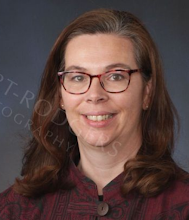-->
Teachers usually have specific reasons for the assignments they offer. Each assignment enables the student to utilize specific thinking skills. The background, directions and explanations the teacher gives with the assignment often indicate his/her expectations for student learning. Many times, a grade will reflect the degree to which the teacher is satisfied with the learning, and/or the degree to which the student has demonstrated his/her ability to apply the appropriate thinking skills.
After so many years of using the document and approaching course expectations through the lens of identifying expectations, when I started teaching in the classroom I had no problems articulating learning goals and/or course objectives for my students. That doesn't mean they could identify them any more readily on their own, but I could then use my Bloom's Taxonomy key to help them understand the depth and level of understanding that I expected from them. It provided a means for me to communicate expectations for time, energy and depth of engagement.
Students also have reasons for completing assignments (other than the obvious necessity of passing the course). As the student interprets the assignment, he/she must identify some objectives for learning and determine the thinking skills necessary to complete them. Doing so will not only enable him/her to better meet the teacher’s expectations, but can also result in greater motivation to complete the assignment effectively
It's the motivation that will drive learning. I have recently learned a new phrase that perhaps captures the source of the intrinsic motivation that most good teachers try to tap into as they design curriculum and assign learning tasks -- epistemic curiosity. Shared by Jennifer Mangels, Ph.D. during a presentation at the Learning and the Brain conference I attended last year in Chicago, epistemic curiosity is "an emotional or motivational condition that creates the drive for knowledge-seeking, potentially suppressing anxiety and fear that might arise in the face of uncertainty or even failure (from her website)
Providing the time and space for students to consider their own learning objectives (targets, if you will) AFTER helping them to understand the goals or objectives of the teacher (author, presenter, lecturer, guide) can often ensure that students can make active (or intentional) decisions about how, when, why and for how much they engage in the learning process. It can also help the learner prioritize tasks and gauge level of engagement.
[A later topic to explore... Trust -- How students' relationships with their teacher, their tutor, their coach, their parent, etc. can inform and motivate achievement that is personally satisfying and can drive learning]
